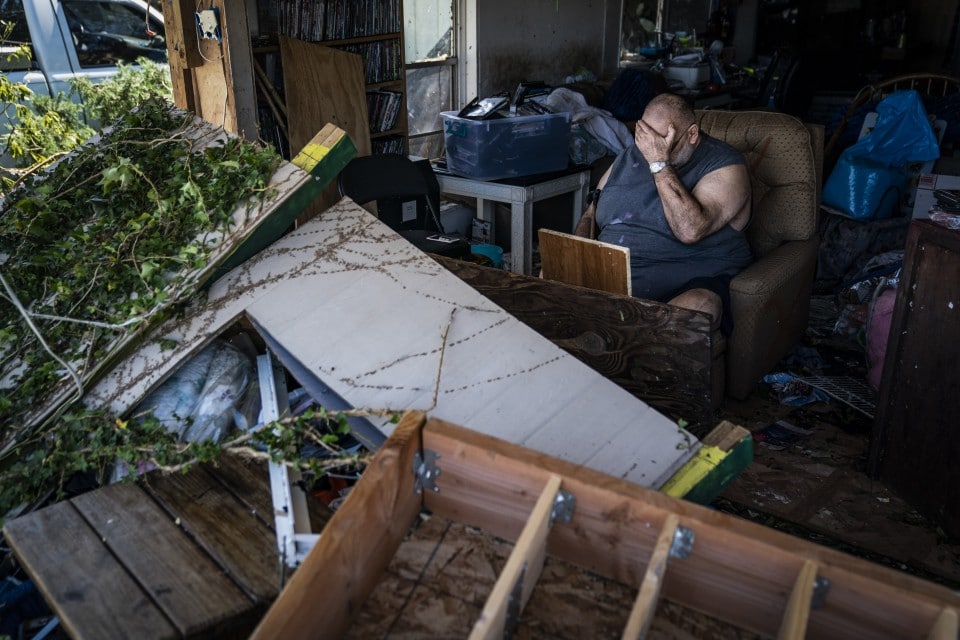Aron Chang is an urban designer and founding member of the Water Collaborative of Greater New Orleans. He also co-founded Ripple Effect to promote water literacy in schools.
NEW ORLEANS — When Hurricane Michael devastated the Florida Panhandle nearly two weeks ago, it was the latest reminder that many cities and communities near the ocean are unprepared for the effects of climate change. As communities from the Carolinas to Hawaii face the tough decision of how to rebuild and invest in climate adaptation measures, the experience of New Orleans offers two critical lessons for the rest of the country.
The first is that communities starting to erect levees, flood gates and pump stations should do so only after consideration of the long-term consequences of such structures. In New Orleans, fossil fuel-dependent adaptations have created a false sense of security, heightened long-term risk and exacted significant ecological and economic costs. Over the past 120 years, the city has invested billions of dollars in creating pumping systems and perimeter levees intended to protect residents from water, but the sinking of large parts of the city below sea level is a direct consequence of those decisions.
At the beginning of the 20th century, a newly-invented pump allowed the city to move storm water rapidly out of the city whenever it rained and to drain and develop the swampland that surrounded the historic core of the city. In 1965, after Hurricane Betsy flooded large parts of New Orleans, the federal government responded by building a comprehensive ring of levees and flood walls to protect New Orleans’s residents from storm surge. Four decades later, those same levees and flood walls failed with the arrival of Hurricane Katrina in 2005. Since then, we have invested another $14.5 billion in strengthening that protective system. But is the city safer and more resilient than it was over a hundred years ago?
Probably not. Nearly 50 percent of New Orleans’s land now sits below sea level, and entire neighborhoods continue to sink as we pump storm water out of the city with each rain storm. All that piping and pumping costs over $50 million annually. And yet the city still often floods when it rains, even without a hurricane. Meanwhile, the city’s coastal fortifications, along with the rest of the Louisiana coast, are sinking as the sea level rises. Our well-intentioned engineering solutions often do work within the framework set forth by their designers. But as we now know in New Orleans, each narrow-purposed solution — stopping storm surges and removing storm water — has caused harm and increased long-term risk in the environments and the communities they are meant to protect.
The second lesson from New Orleans is that successfully implementing climate adaptation and resilience plans requires community buy-in. In Louisiana, for example, the Coastal Master Plan, the science and engineering-based document that guides coastal protection and restoration efforts, will cost $50 billion. But it has no long-term sources of funding. In greater New Orleans, the 2013 Urban Water Plan, for transforming existing infrastructure and urban landscapes to “live with water” (which I worked on as a design team lead), has a price tag of $6.2 billion. It also has no local sources of funding or defined implementation pathways.
These plans are far-reaching and require the buy-in of whole communities — citizens who support the plans and who will vote to tax themselves to fund their implementation, as well as public agencies that will radically reshape the environment. That kind of buy-in does not exist, despite the urgency of taking action.
The lack of buy-in is rooted in how we go about planning for resilience and climate adaptation. Community engagement is often secondary to planning, and professional planners, designers and engineers often do not reflect the demographics of the population at large. Neither do they share a common language with the wider community. Terms like “recurrence intervals” or “non-structural mitigation” stop conversations rather than sustain them. The solution isn’t to dismiss technical expertise, however, but to invest in environmental education and community-based planning.
Strengthening environmental education means incorporating environmental literacy and design into STEM and social sciences curriculums, as well as after-school and recreational programs. It means reconnecting citizens to the ecology, geography and environmental history of the places where they live. It means building a broad base of environmental literacy and stewardship so that the whole community can be meaningfully involved in climate adaptation.
For that to happen, the city must develop tools, processes and forums that support citizens in becoming the co-authors of climate adaptation plans. It must rebalance power by shifting professional consultants and planners to a supportive role. Technical experts and citizens alike should be at one table, engaging in fierce debate over the plans that will shape the future of their communities.
Where will the funding for all this come from? Today’s climate adaptation and resilience projects typically dedicate 2 to 5 percent of the budget to community engagement, nothing to environmental education, and the rest to consulting, administration and construction costs. The city should instead dedicate 40 to 50 percent toward environmental education and community-based planning processes.
We must spend more on empowering people, especially our youth, and less on the seawalls and pump stations that cost too much in the end to even implement. If we do that, we might be able to act with the urgency, speed and collective purpose that is necessary to protect our cities from climate change.
This was produced by The WorldPost, a partnership of the Berggruen Institute and The Washington Post.





